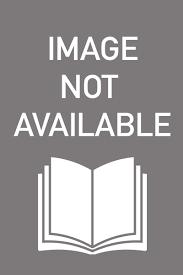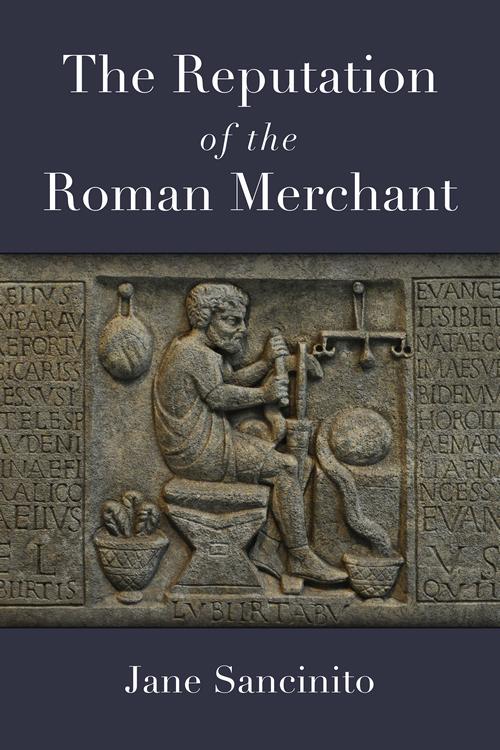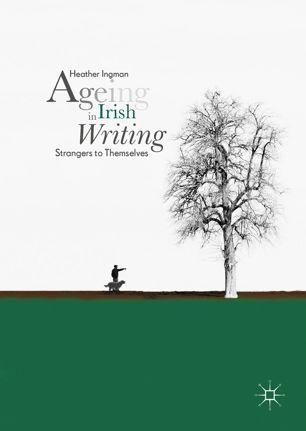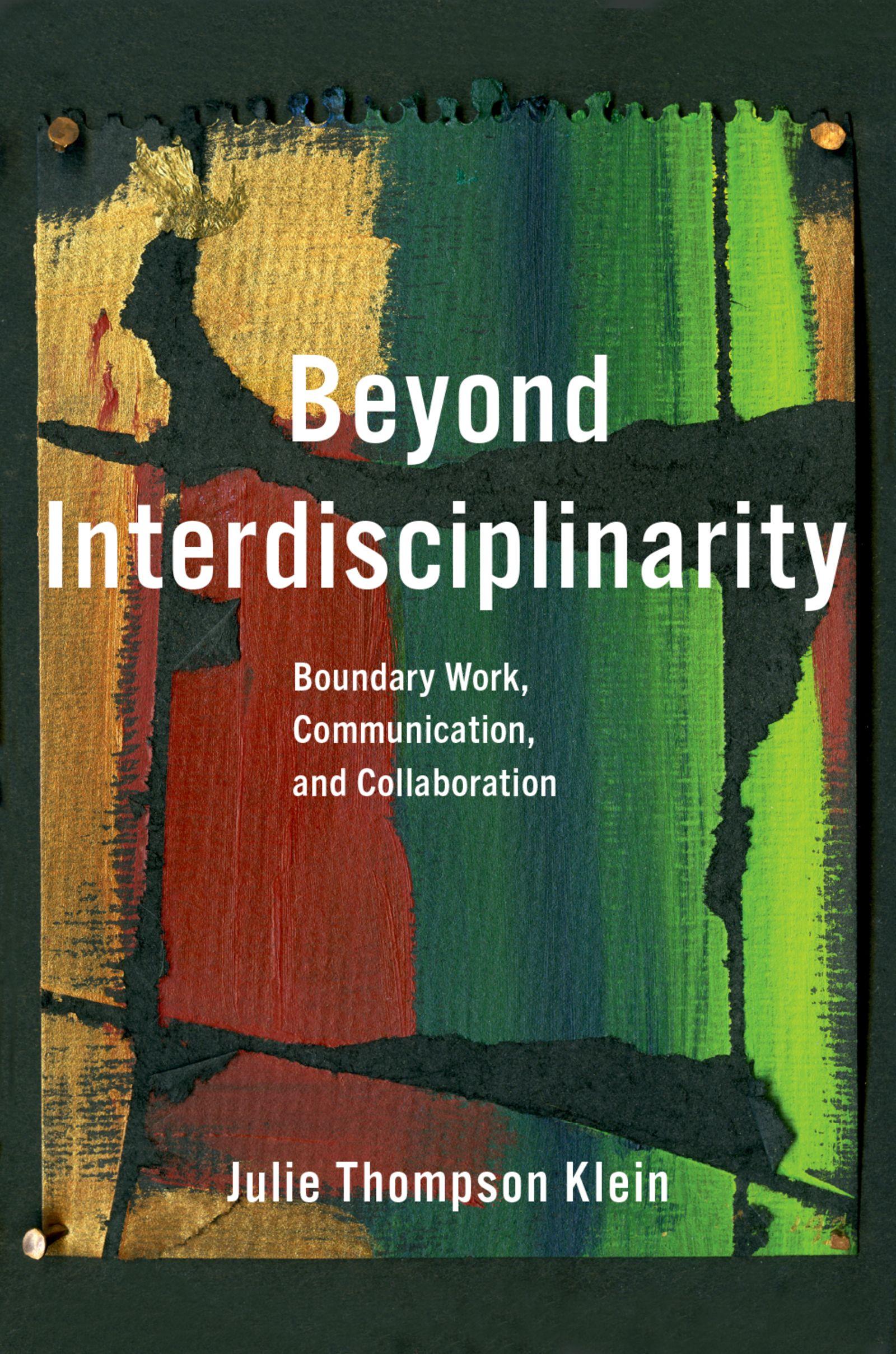Beyond Interdisciplinarity
Boundary Work, Communication, and Collaboration
Julie Thompson Klein
Oxford University Press is a department of the University of Oxford. It furthers the University’s objective of excellence in research, scholarship, and education by publishing worldwide. Oxford is a registered trade mark of Oxford University Press in the UK and certain other countries.
Published in the United States of America by Oxford University Press 198 Madison Avenue, New York, NY 10016, United States of America.
© Oxford University Press 2021
All rights reserved. No part of this publication may be reproduced, stored in a retrieval system, or transmitted, in any form or by any means, without the prior permission in writing of Oxford University Press, or as expressly permitted by law, by license, or under terms agreed with the appropriate reproduction rights organization. Inquiries concerning reproduction outside the scope of the above should be sent to the Rights Department, Oxford University Press, at the address above.
You must not circulate this work in any other form and you must impose this same condition on any acquirer.
Library of Congress Control Number: 2021935958
ISBN 978–0–19–757115–6 (pbk.)
ISBN 978–0–19–757114–9 (hbk.)
DOI: 10.1093/oso/9780197571149.001.0001
1 3 5 7 9 8 6 4 2
Paperback printed by Marquis, Canada Hardback printed by Bridgeport National Bindery, Inc., United States of America
For George, who never hesitates to question a boundary
And for Sarah, who never hesitated to cross a boundary
Foreword
The only way to achieve the impossible is to believe that it is possible.
Lewis Carroll, Alice in Wonderland (1865)
Every idea, every concept has an origin, a genesis, and a more or less transformative evolution according to uses, contexts, and scientific, linguistic, social, and cultural practices. The concept of interdisciplinarity in the broad sense—which some say is a simple fad or even denigrate it under the pretext of disciplinary excellence while others make it an object of study and a practice in its own right and perfectly legitimate—belongs to this large family of living concepts in science, arts, culture, and society. The book you hold in your hands or under your digital eye is timely. It is remarkable and will be noticed by all researchers, teachers, all people who are directly or indirectly interested not only in interdisciplinarity in all its forms but also in the future of disciplines in a changing world. Interdisciplinarity as a concept, an epistemological posture and a practice is characterized more by its heterogeneity than by theoretical and methodological uniformity. It is not one and indivisible, but plural and shareable beyond disciplinary, national, and international differences. It works on and at the boundaries of disciplines and comes in more or less multi-, inter- and trans-disciplinary forms (crossdisciplinary work), while extending its radius of action in and with extra-academic spheres (cross-sectorial work).
Interdisciplinarity as an object and knowledge of interdisciplinarity do not submit to essentialism; they are not reducible to a set of strictly necessary and sufficient definitions which would definitively fix what interdisciplinarity is or is not. However, and conversely, they are not reducible to a relativism of the object and of knowledge which would only be understood in specific and contingent contexts. By avoiding the double trap of essentialism and relativism, we are invited here to think about interdisciplinarity in all nuances. Interdisciplinarity in the diversity and extent of its forms is consistent, in the sense that it has long been the subject of academic research which determines its contours, documents practices and informs the scientific community of advances at the frontiers of disciplines. But it is also fluid in the links that interdisciplinarity forges with other concepts and practices of communication, collaboration, learning, and creativity. The middle path that opens between the acquired
consistency and the fluidity in the making is the opportunity to situate the work on interdisciplinarity in a broad and rhizomatic perspective. Interdisciplinary and disciplinary communities need this openness more than ever to fully understand the undeniable advances of disciplinary but also interdisciplinary research, to grasp the inter-misunderstandings and to overcome the epistemological, institutional, and cultural obstacles that still prevent reciprocal recognition and valuation of the diversity of scientific practices. Interdisciplinarity, this concept with a thousand faces, the very plasticity of which allows disciplines and boundary work to be included in the same space and time.
“Beyond” interdisciplinarity means in spatial terms what there is history behind and below the concept in a complex and ramified definitional space; in temporal terms it means what there is after with the idea to go beyond and to go further, toward renewed practices of interdisciplinarity and perhaps more provocative paths such as postdisciplinarity or indisciplinarity. We salute here the erudite and experiential attention paid to diversity, evolution, change, and the future of interdisciplinarity. Julie Thompson Klein invites us on an exciting conceptual journey informed by science and practice. Renowned for her support of young scholars, Julie’s characteristic generosity and inclusivity shine through in her acknowledgment of the contributions of others as she shares her encyclopedic understanding of interdisciplinarity and what it means to go “beyond.” Julie invites us to accompany her on her academic and personal trajectory in the service of interdisciplinarity, epitomized by her scientific rigor and commitment to scholarship and typified by a humility, enthusiasm, and generosity that are acclaimed by friends and colleagues across the globe.
Frédéric Darbellay
Inter- and Transdisciplinarity Unit
Center for Children’s Rights Studies
University of Geneva (Valais Campus)
Catherine Lyall
Science, Technology & Innovation Studies
School of Social and Political Science
University of Edinburgh
March 2021
Acknowledgments
This book is the culmination of a nearly career-long investigation into the nature of interdisciplinarity. During the late 1970s and 1980s I began studying the concept out of curiosity. At the time I was a member of a new experimental curriculum founded in 1973 at Wayne State University. It was initially called the University Studies/Weekend College Program, then subsequently elevated to the Department of Interdisciplinary Studies, before being demoted back to program status. My colleagues and I felt beleaguered by skepticism about our mission in an institution that had already terminated a well-known experiment in the history of interdisciplinary education, Monteith College. Doubts about the rigor of interdisciplinarity were also coupled with the stigma of being called a “weekend” college despite meeting other days of the week as well, an academic reward system that favored research over teaching, and a student population of working adults.
Flash forward to 2007, when the University terminated the program. Interdisciplinary research was highly valued by then, not only locally but nationally and internationally as well. Because my original discipline was literary studies I was placed in the English Department, even though I had evolved into a humanities professor with extensive interests in social science and studies of knowledge and of higher education. I was also active in multiple professional networks engaged in inter- and trans-disciplinarity and team science. The generous support of the Vice President for Research, Hilary Ratner, and the Associate Vice President for Research, Gloria Heppner, led to a buyout of half my teaching load in order to promote interdisciplinary development and team science on campus. I remain grateful for their respect and our shared commitment.
In moving beyond that biographical context I run the risk of failing to acknowledge the multitude of individuals who have nurtured and supported my scholarship since the late 1980s. So I cite here only professional organizations that became homes for my work while thanking individuals whose conversations and collaborations directly helped me test ideas in this particular book. Even that narrow slice of time, however, is rich and abundant. The first organization is the Association for Interdisciplinary Studies (AIS). Given my conviction that a scholar’s best reader is someone who offers constructive criticism, even in disagreement, I am especially grateful for ongoing feedback
from former AIS presidents Machiel Keestra at the University of Amsterdam and Rick Szostak at the University of Alberta.
The Network for Transdisciplinary Research, known as td-net, has also been a vital international home. It continues to be a space of learning and collaboration in conferences and projects that cross boundaries of disciplines, fields, professions, and sectors of society with the aim of solving complex problems. I am especially grateful to Christian Pohl, who was instrumental in facilitating my appointment as an International Research Affiliate in the Transdisciplinarity Lab (TdLab) of the Department of Environmental Systems Science at ETH-Zurich. I also continue to benefit from collaborating with and the support of Sabine Hoffmann, Group Leader of Transdisciplinary Research at the Swiss Federal Institute of Aquatic Science and Technology known as EAWAG.
TdLab projects led to productive collaborations with others as well. I have gained valuable insights by co-authoring with Dena Fam and Cynthia Mitchell, formerly at the University of Technology Sydney, learning from their expertise in sustainability research and education. Bianca Vienni Baptista in the TdLab at the University of Zurich also continues to be a valued partner in numerous projects, including a special section of the AIS journal Issues in Interdisciplinary Studies on crossdisciplinary research and education in Latin America and a forthcoming book on institutionalizing interdisciplinarity with an international array of case studies.
Four additional individuals associated with td-net are ongoing sources of conversations, collaborations, and kindred projects. Gabriele Bammer at the Australian National University has been a steadfast leader of the Integration and Implementation Sciences network, known as i2S, and has generously included me in many efforts on an international scale. Conversations and publications with Frédéric Darbellay and Zoe Moody at the University of Geneva have also nurtured our mutual interests in inter- and transdisciplinarity. And Catherine Lyall at the University of Edinburgh continues to be a valued partner in several projects throughout Europe, in science policy, higher education, and crossdisciplinary research and education.
The International Network for the Science of Team Science, known as INSciTS, has been another home for advancing my understanding of collaborative research. I continue to learn from colleagues in the Network and wider field of team scholarship. In addition to Daniel Stokols at the University of California, Irvine campus, who has always been a generous partner in gathering and reflecting on resources, I especially thank Michael O’Rourke, Director of the Center for Interdisciplinarity at Michigan State University. He was a vital partner when he chaired the leadership team for hosting the 2019
InSciTS conference, and beyond that remains one of my most valued sources of feedback.
Proper credit for illustrations others created appear in the text, but I want to thank here as well the following people for permission to use their work: Dena Fam at the University of Technology Sydney; Elsbeth Spelt at the University of Wageningen; Stephen Fiore at the University of Central Florida; Daniel Stokols at the University of California, Irvine; and Justin Nash at the University of Connecticut. In addition I thank Noha Beydoun for early help locating resources while she was my graduate research assistant at Wayne State University. I also thank Bethany Laursen of Laursen Evaluation and Design, LLC, and Michigan State University for her design work on my original text tables for this book and her own scholarship on integration.
And, finally, I thank my editor at Oxford University Press, Jeremy Lewis. I have received nothing but wise counsel and generous support throughout the process of composing this book. He is an author’s dream. I am also grateful to the staff of the Press for enabling the art of Gail Ryder for the book’s cover and advertising material. It is a unique expression of relationships and layerings associated with both crossdisciplinary and cross-sector work. Ryder is an independent artist and Associate Professor of Humanities at Siena Heights University.
Glossary
Table A.1 The Glossary is a digest of related concepts that appear across the book. Proper citations for concepts in bold print appear in pertinent chapters.
Overarching Terms
Crossdisciplinary is a composite term for multi-, inter-, and trans-disciplinary approaches. Cross-sector is a composite term for bridging academic, governmental, industrial, and community perspectives and expertise.
Boundaries
Overview
Dimensions
Boundaries have a dual character since they demarcate and enclose but are also permeable and contingent. Three related concepts also appear across the book.
Boundary Rhetoric signifies territorialization and politicization as well as permeation and crossfertilization.
Boundary Objects mediate differences by creating common foci, enabling communication and cooperation between groups with different epistemologies, values, norms, and aims.
Boundary Agents and Organizations perform brokering roles across different forms of knowledge, including both academic expertise and stakeholder groups.
Boundary Work
Overview The conceptual framework of this book is a composite of claims, activities, and structures by which individuals and groups work directly and through institutions to create, maintain, break down, and reformulate knowledge units.
Dimensions
Acts of spanning, crossing, and bridging boundaries; Inclusions of multiple forms of knowing, including academic, lay, and Indigenous forms; Processes of interacting, integrating, and collaborating; Strategies of brokering, mediating, and negotiating; Operations of demarcating, constructing, and refiguring; New Relations of interdependence and convergence; Outcomes of breaching, transgressing, and transforming.
(continued)
Communication and Collaboration
Overview Communication entails exchanging individual approaches and building Interlanguage in both Trading Zones and Communities of Practice.
Dimensions
Pigeon forms of language are interim tongues, while Creoles are first languages of new communities.
Communication requires Translation across different specialist languages but is not a rote process of application and transfer. It also requires negotiation, dialogue, and translation boundary work.
Collaboration entails Boundary Weaving through dialogue in a communication boundary space that develops a cooperation and communication culture.
In order for Collective Identity to emerge in a group, collective communication competence is crucial, facilitated by socio-cognitive platforms and collaborative interdisciplinary reasoning for integration, communicative rationality, and communicative action.
Disciplinarity and Multidisciplinarity
Overview Knowledge is classified into differing forms. The dominant organization in the 20th century was disciplinarity, segmenting subjects and objects into separate domains. Multidisciplinary approaches aim to bring them together but typically lack integration and collaboration.
Dimensions
Disciplinarity demarcates selected objects, subjects, and methods that reinforce specialization through institutionalizing mechanisms of academic departments, professional societies, meetings, publications, degrees, and a job market. They establish boundaries around epistemic cultures, dividing insiders from outsiders. Yet, they also change historically and crossfertilize.
Multidisciplinary approaches juxtapose separate disciplinary approaches around a common interest, adding breadth of knowledge and approaches. However, disciplines continue to speak as separate voices in encyclopedic alignment and retain their original identity. Underlying assumptions are not examined, and the status quo remains intact.
Discourses of Interdisciplinarity
Overview
Patterns of argument shape the way concepts are defined and valued. They create boundaries around particular claims, practices, and structures that create tensions across them. Priorities shift over time, though, and despite continuing tensions discourses intersect.
Dimensions Philosophical Discourse advances epistemology and ontology by exploring the theoretical nature of knowledge and of reality. Associated historically with the quest for unity of knowledge, it expanded with new theories of knowledge and synthetic paradigms.
Discourses of Interdisciplinarity (cont’d)
Discourse of Problem Solving is primarily instrumental, driven in large part by scientific, economic, and technological problems. It prioritizes pragmatic needs, application, criteria of reliability, and efficiency over theoretical interests.
Discourse of Critique interrogates the existing structure of knowledge and education. It is a multilayered form of argument that interrogates instrumentality, the principle of unity, disciplinarity, and even interdisciplinarity while promoting transgression of boundaries and a democratic imperative
Overlaps
Categories are not air-tight, however. Problem solving is currently prioritized over epistemology, but cross-sector work is fostering an Epistemic of Problem Solving, a Critical Epistemology, as well as Transdisciplinary merging of Socially Robust Knowledge and Metareflection. Critique also advances a Transgressive approach to existing structure and practices with the aim of transforming them. Discourses intersect with other concepts and theories, including complexity, Mode 2 knowledge production, postnormal science and wicked problems, convergence, and team science, as well as heterarchy.
Ecology of Spatializing Practices
Overview
Dimensions
Integration
Overview
Dimensions
A variety of sites facilitate cutting across demarcations and Boundary Weaving: including Boundary Zones, Engagement Spaces, and Transaction Spaces.
Spatial Metaphors conjure images of turf and territory as well as jurisdiction and control. The dominant bounded space in the academy is disciplines.
Organic Metaphors signify processes of generation, crossfertilization, interrelation, and hybridization akin to processes in nature.
Integration is widely regarded as essential to crossdisciplinary and cross-sector collaboration. However, there is no universal formula, and degrees of interaction differ.
Four fault lines of definition appear: Linear and Algorithmic step models differ from Heuristic and Constructivist frameworks.
Theoreticians and practitioners differ on whether integration is Cognitive in nature or factors in Social and Communicative aspects. Proponents disagree on whether it is an Individual phenomenon or a Collaborative one.
Emphasis varies on primacy of Disciplines versus Societal Perspectives.
(continued)
Integration (Cont’d)
Overlaps The underlying premise of unification is disputed. Partial Integration of specialities, Contextualized alternatives, and Alternative Frameworks challenge universal theories, while acknowledging differing scales and contexts. In addition, thematic, product- or problem-oriented types of integration differ as well as epistemic, cognitive, social-organizational, and communicative levels.
Interdisciplinarity (ID)
Overview
Dimensions
Interdisciplinarity connotes integration of data, methods, tools, concepts, theories, and/or perspectives from multiple disciplines or bodies of knowledge in order to answer a question, to solve a problem, or to address a topic or theme that is too broad or complex to be dealt with by one discipline. It is dated to the early 20th century, though expanded into a heterogeneity of practices and forms, ranging from borrowing tools and methods to forming new fields and interdisciplines. A variety of catalysts and contexts also shape outcomes, with differing trajectories and intersections with other fields.
Instrumental Forms prioritize economic, technological, and scientific problem solving, often aligned with needs of the marketplace and national defense.
Critical and Reflective Forms interrogate the existing structure of knowledge and education while raising questions of value and purpose silent in instrumental forms.
Methodological Forms tend to improve the quality of results, as in borrowing a method or concept to test a hypothesis, to answer a research question, or to help develop a theory.
Theoretical Forms build a comprehensive conceptual framework or synthesis or foster systematic integration of propositions, models, or analogies across disciplines.
Narrow ID occurs between disciplines with compatible methods, paradigms, and epistemologies.
Broad or Wide ID occurs between disciplines with different epistemologies and methods.
Learning
Overview Learning is fundamental to collaboration in both crossdisciplinary and cross-sector work.
Dimensions
Integrative Learning in interdisciplinary education is grounded historically in a shift from content-based to process-based integration, the concept of Unifying versus Unification of existing approaches, and the theory of Constructivism and Reflective Equilibrium
Mutual, adaptive, generative, deep, double- and triple-loop learning, and reflexivity are linked with collaborative learning and situated learning
Relationality and Transactivity foster collective intelligence.
Learning (Cont’d)
Transdisciplinarity (TD)
Overview
Dimensions
Stage models move from identification and positioning to coordination and the possibility of transformation, while factoring in iteration and mediation
Competencies span disciplinary knowledge and integrative and collaborative capacity, including cognitive and social skills as well as ethics, while cultivating intellectual curiosity, flexibility and adaptability, and the ability to absorb information.
Productive Pedagogies support interdisciplinary learning with a multiplicative power that draws on team-based projects and case studies; role-playing, simulations, and gaming; problem-, discovery-, and inquiry-based learning; and field experiences as well as formal didacticism and mentoring.
Transdisciplinary Orientation combines values, attitudes, beliefs, conceptual skills and knowledge, and behaviors for interactional expertise.
The quest for Unity of Knowledge framed initial thinking. Although initially less prominent than interdisciplinarity, this label become more prominent in the late 20th century, expanding underlying meanings of the core term. It also elevated new relationships between science and society while challenging traditional alignment with disciplines.
The first major typology of interdisciplinary approaches cited the exemplar of anthropology as a broad science of humans. However, participants differed on exact meaning: whether it is a particular interlanguage, a higher stage in epistemology of interdisciplinary relations, or social purpose.
Subsequently it labeled Overarching Syntheses that transcend the narrow scope of disciplinary worldviews, including general systems theory, post/structuralism, feminist theory, cultural critique, complexity theory, and sustainability.
Meaning broadened further to include a new overarching paradigm for health and wellness and collaborative cross-sector partnerships for sustainability. The term has also been a descriptor for synoptic disciplines and broad fields as well as new critical paradigms fostering transgression of existing boundaries.
In the 1980s and 1990s three new major connotations appeared: a new structure of unity informed by the worldview of complexity in science, a new mode of knowledge production that fosters synthetic reconfiguration and recontextualization, and partnerships with stakeholders in public and private spheres for solving complex problems through co-production of knowledge and public engagement.
Sources: Klein, 2020; Laursen Evaluation and Design, LLC.
The Meaning of a Word
Linguists attribute shifts to multiple causes, though four stand out (Ullman, 1962). The first, Pejoration, signals negative connotations, evident in critiques of both the tradition of unity of knowledge and the current heightened priority of problem solving. It is also apparent in attacks on the very concept of interdisciplinarity. The second cause, Amelioration, signals positive associations, including elevation of problem solving over epistemology. The third, Narrowing, marks restricted uses, including association of “interdisciplinary studies” with education rather than research. It is also evident in the crossfire of claims over what constitutes “genuine” inter- and trans-disciplinarity. Scholarship is not a combat sport, but it appears so in the boundary work of definition. Finally, the fourth, Broadening, acknowledges expanded meaning (Klein, 2020).
Broadening prompts this book, though inclusive of negative, positive, and narrow connotations. Any attempt at definition also benefits from etymological sleuthing. Stephen Fiore (2008) tracked crossdisciplinary collaboration to Brozek and Key’s observation in 1944 that the interdisciplinary approach was becoming a prominent characteristic of science. David Sill (1996), though, attributed origin even earlier, citing the 1929–1930 annual report of the USbased Social Science Research Council (SSRC). Roberta Frank (1988) tracked origin of the term even earlier, to the mid-1920s. It was shorthand for crossing boundaries of the seven societies of the SSRC, she reported, with the aim of problem-focused applied research. Taking the 1920s as a point of etymological origin, then, interdisciplinarity is nearing a century mark. A widely cited point of origin, however, does not freeze meaning. During the same period, the underlying idea was associated with integrative models of general education and the core curriculum movement. Deeper into the 20th century problem-solving underwent Amelioration, expanding from the SSRC’s social agenda to defense-related research in the 1940s and space research from the 1960s forward. Then, in the 1970s, it was reinforced in science-based areas of high technology and subsequently aligned with health and sustainability.
All the while new fields and educational programs have continued to emerge, resulting in both Pejoration and Broadening of meaning. The principle of unity and the system of disciplinarity were increasingly challenged, and transdisciplinarity became more prominent as new connotations expanded beyond the traditional quest for unity of knowledge. In addition to general systems theory, new transdisciplinary syntheses included feminist theory, cultural critique, and sustainability as well as connotations informed by the worldview of complexity in science and by co-production of knowledge
with stakeholders in society. Celia Lury also suggested social movements belong in a “third space” that includes social movements beyond the academy, the public, and representatives of government and industry (2018, p. 9) .
Even this brief opening snapshot reveals why interdisciplinarity is a conflicted discourse. Rhetorics of holism and synthesis compete with problem solving and innovation as well as critique. Opinions also differ on the foundation of interdisciplinarity, with claims ranging across epistemology and methodology to social justice and product innovation. Organizing languages have changed as well. At the first international conference on interdisciplinary research and teaching, held in France in 1970, key terms were logic, cybernetics, structuralism, general systems, and organizational and information theories (Apostel, 1972). Today the typical warrants are complexity, contextualization, and collaboration. Frodeman (2017, p. 3) reported the term innovation stood out across the 46 essays of the updated Oxford Handbook. Yet, even the same keyword has different connotations. Innovation, for example, is aligned with commerce, new protocols and treatments in healthcare, educational experimentation, and transformation of institutional structures and professional practices. Furthermore, commitments differ even in the same field. Weszkalnys and Born’s (2013) comparison of three research initiatives provides an introductory illustration of complications for both definition and implementation.
The first initiative Weszkalnys and Barry (2013) examined, the Öko Institut, formed in the late 1970s as a scientific forum of environmental citizen groups and by the early 2000s was an independent advisory center. The second, the Tyndall Center for Climate Change Research, appeared in 2000 as a selfconscious interdisciplinary initiative across several British universities. The third, the Earth Institute at Columbia University, emerged in mid-1990s as an institutional innovation for the 21st century. The Tyndall Center sought to move beyond natural science conceptions of climate change by incorporating social aspects. However, interdisciplinarity was marginal to climate change research in the UK at the time. The Earth Institute, in turn, was conceived as a tool for problem-solving, but inter- and trans-disciplinarity were of lesser significance. In contrast, the Öko Institut identified with a problem-oriented connotation of TD beckoning a new social contract for science. It was established outside the university but faced pressure for academic performance norms such as publications. So did the Tyndall Center.
New developments also challenged interdisciplinarity as the dominant descriptor for boundary crossing. At the turn of the century, Rustum Roy’s (2000) edited volume, The Interdisciplinary Imperative, contended that accelerated blurring of boundaries of academe, government, and industry meant
“interactive research” had become a more apt descriptor. Five years later, a state-of-the-art report on interdisciplinary research from the US-based National Academies of Science, Engineering, and Medicine documented increased partnerships across the three sectors (NASEM, 2005). The following year Maton et al. proposed “intersectoral” is a more appropriate term for action-oriented research collaborations across boundaries of academic disciplines and other spheres (2006, p. 5). This book does not account for all sectors. Doing so would require a multivolume encyclopedia. Instead, it reads intersections of interdisciplinarity with developments and related concepts that render the core term inadequate to account for a fuller range of boundary work across disciplines, fields, occupational professions, and public and private spheres in the North and the Global South. Thus crossdisciplinary and cross-sector are key to analysis throughout the book.
Crossdisciplinary encompasses multi-, inter-, and trans-disciplinary forms of research and education. Some have stipulated specific connotations, but the term appears increasingly as a generic adjective for these and other forms of crossing disciplinary boundaries, especially in the academic sphere. Cross-sector refers to work bridging the multiple sectors of society identified above. The subject of definition is likely to produce groans. Rick Rylance faults “arcane debates” on terminology as “faintly theological hair-splitting,” citing in particular my sorting of methodological, theoretical, instrumental, and critical forms as well bridge-building and restructuring in a typology of definitions for the Oxford Handbook (Rylance, 2015, p. 314; Klein, 2017). However, a baseline of multi-, inter-, and trans-disciplinarity is crucial for clarity. The Glossary includes definitions of these and other related labels, concepts, and activities. It provides snapshots of meanings that appear both within separate chapters and across them. In weighing the overarching question of definition, Frodeman (2017) suggested inter- and trans-disciplinarity are both boundary objects with different meanings at different times for different groups. Therefore, to repeat a refrain that also echoes across chapters, context matters.
The Book
This book’s contention that interdisciplinarity is no longer an adequate term to account for heterogeneity of activities currently circulating does not amount to jettisoning the concept. Instead, it recognizes both continued use of the term and expanding interests that cross boundaries of sectors. This premise does not mean anything goes, however. It eschews essentialism of













